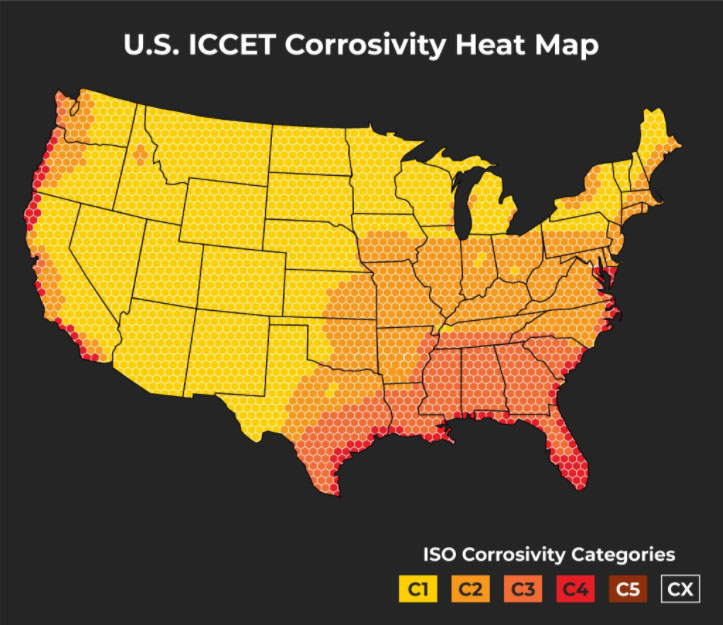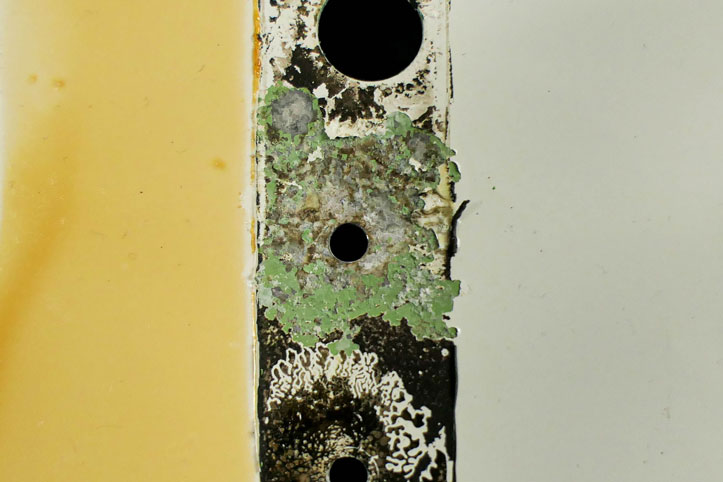Corrosion, or the deterioration of a metal surface through oxidation, has always been one of the most harmful and expensive technical challenges within the aviation industry. Without taking the proper preventative measures and considering a variety of contributing factors, the corrosive process can render aircraft unusable within a few years. Luckily, there are many resources today to combat corrosion for any metal surface.
In order to properly select a treatment system for corrosion, the causes must first be understood. The most notable consequences come from environmental conditions, spillage, storage, and pollution. The effects can also be exacerbated by design and construction techniques that use dissimilar materials. Considering these issues when engineering any system with metal surfaces can mitigate at least some of the inevitable problems.
This guide will give you a synopsis of the causes of corrosion as they pertain to the design and maintenance of metal systems. We will look closely at the mechanics behind corrosive processes. Our goal is to arm you with the knowledge necessary to alleviate corrosive damage by understanding the contributing factors.
The first thing to examine is the equipment's environment, both natural and man-made. Exposure to certain elements induces the corrosive process, so it is important to limit the time your aircraft spends in or near such hazards. First, let's look at the key man-made factors:
Shipment and storage are self-explanatory: allowing metal surfaces to have prolonged exposure to moisture, ozone, salt, and severe temperatures make them more susceptible to corrosion. Storing equipment in sealed, climate-controlled shipping containers and/or appropriate hangar conditions when not in operation can significantly reduce the risk of corrosive attacks.
Manufacturing operations can carry their own inherent threats. For instance, design features such as the specific placement of battery compartments can have a large impact on the speed of corrosion. Similarly, spillage that occurs in bathrooms or galley areas can cause unusual amounts of moisture buildup within the system. Good design will take these factors into account, but not every engineer considers them. In order to protect against problems like this, extensive inspection processes are critical.
Industrial pollutants are equally harmful and can be difficult to protect against. These include several contaminants:
Here, the main path to prevention is through avoidance. We recommend that aircraft steer clear of large industrial operations and any other areas with high concentrations of these chemicals in order to decrease exposure. The map below shows the US corrosivity heat map using the ISO Corrosivity and ESC factors methodology. The six categories indicate which areas in the US have high environment severity - or corrosivity of the local environment - and are identified as:

Natural environments pose another set of risks that expedite corrosion. Below is a list of the most common:
Water and other sources of moisture often contain chlorides, sulfates, and nitrates. These compounds speed the corrosive process on metal surfaces because they encourage oxidation. Additionally, salts are functionally a special type of chloride that also act as electrolytes and accelerate corrosion. It is highly recommended you test your aircraft wash water for the correct PH levels regularly.
Dust, ash, and sand are compounds that act as adsorbents that hold moisture. They impact metal surfaces when they get embedded in equipment and allow water-driven corrosion to ensue. As a result, as far as corrosive effects are concerned, the ideal environment for aircraft is one with high temperature and low humidity - conditions where any lingering moisture evaporates quickly. Naturally, this means tropical climates are the most harmful, and long-term storage in such areas should be avoided when possible.

Aside from the aforementioned environmental factors, a leading cause of corrosion is the material selection itself. Placing dissimilar metal surfaces in contact with one another creates problems. On metal surfaces, atoms tend toward oxidation and lend electrons to oxygen molecules in the surrounding environment. When this occurs, the oxygen has an increased number of electrons and forms an oxide with the metal. This oxidation is the cause of corrosion and results in extensive damage to the metal surface. One of the most common types, called galvanic corrosion, occurs when this oxidation-reduction reaction takes place at the interface of two dissimilar metals. This happens because the two metals contain different charges and create a potential difference between the surfaces which then increases ionic exchange and thus furthers oxidation.
Understanding the causes of corrosion allows you to optimize operational conditions for your aircraft to best combat corrosive effects. An understanding of the chemistry behind corrosion will help you formulate the ideal treatment and maintenance plan to fit your local conditions and your particular equipment. Get in touch with an Av-DEC representative to learn more about corrosion and how to prevent it.